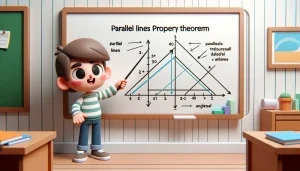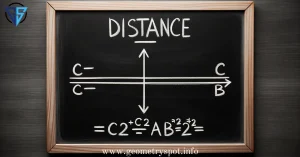What Are Perpendicular Bisectors?

Are you curious about the world of geometry and want to dive deeper into the concept of perpendicular bisectors? Well, you’re in the right place! In this comprehensive guide, we will explore the intriguing world of perpendicular bisectors, breaking down complex ideas into easy-to-understand sections. So, grab your geometric compass, and let’s embark on this educational journey.
Geometry, the branch of mathematics that deals with shapes, sizes, and properties, offers a plethora of intriguing concepts. One concept that often captures the imagination of students and mathematicians alike is the “perpendicular bisector.” In simple terms, a perpendicular bisector is a line or line segment intersecting another line segment at a right angle, cutting it into two equal parts. But there’s so much more to explore beneath the surface!
What Are Perpendicular Bisectors?
Let’s start by unraveling the core definition of perpendicular bisectors. These lines or line segments are essential tools in geometry, acting as the boundary between two halves of a line segment. But, if you have a line segment, the perpendicular bisector will divide it into two equal parts, forming right angles at the point of intersection.
Properties of Perpendicular Bisectors

Perpendicularity
One of the critical properties of perpendicular bisectors is, as the name suggests, perpendicularity. When a perpendicular bisector intersects a line segment, it creates two right angles. This unique property is the foundation of many geometric proofs and constructions.
Equidistance
Another intriguing property of perpendicular bisectors is equidistance. The point where the perpendicular bisector intersects the line segment is equidistant from the two endpoints of the segment. This means the distance from this point to each endpoint is the same.
Center of the Circle
Perpendicular bisectors also play a crucial role in defining the center of a circle. If you have three non-collinear points, the intersection of the perpendicular bisectors of the line segments connecting these points will be the center of the circumscribed circle.
Real-World Applications
Now that we’ve explored the theoretical aspects, you might wonder, “Where do perpendicular bisectors find real-world applications?” Well, wonder no more! These geometric wonders have practical uses that go beyond the classroom.
Navigation
In the navigation field, perpendicular bisectors are employed to determine the position of an object or location. By measuring angles and distances, sailors and pilots can pinpoint their exact whereabouts.
Architecture
Architects use perpendicular bisectors to ensure the accuracy and precision of their designs. From constructing buildings to laying foundations, these lines are crucial in maintaining balance and symmetry.
Art and Design
Even in art and design, perpendicular bisectors come into play. Artists often use these lines to create perfectly symmetrical and visually appealing compositions.
FAQs
How do you find the perpendicular bisector of a line segment?
Finding the perpendicular bisector of a line segment involves identifying its midpoint and then drawing a line perpendicular to the segment at that midpoint.
Are perpendicular bisectors unique to two-dimensional geometry?
No, perpendicular bisectors are not limited to two-dimensional geometry. They are also applicable in three-dimensional spaces, where they intersect planes.
Can you find the perpendicular bisector of any line segment?
Yes, you can find the perpendicular bisector of any line segment, as long as the segment is not a single point (zero length).
What is the relationship between perpendicular bisectors and right angles?
Perpendicular bisectors create right angles at the point where they intersect a line segment. This relationship is fundamental to their definition and properties.
Are there any practical uses for perpendicular bisectors in everyday life?
Absolutely! Perpendicular bisectors are used in navigation, architecture, art, and other fields to ensure precision, balance, and symmetry.
Can you construct a perpendicular bisector without using specialized tools?
Yes, you can construct a perpendicular bisector using essential geometric tools such as a compass and a straightedge.
Conclusion
In conclusion, perpendicular bisectors are a fascinating aspect of geometry that plays a significant role in theory and practice. From their unique properties to their real-world applications, these lines have a profound impact on various fields. So, the next time you encounter a geometric challenge or admire the symmetry in architecture or art, remember the role that perpendicular bisectors play in shaping our world.




